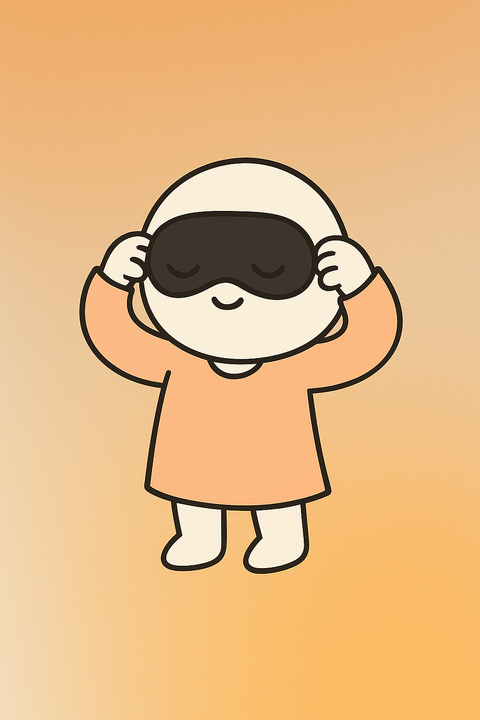For many people, falling asleep at night isn’t as easy as lying down and closing their eyes. Stress, screens, and busy schedules often leave the mind racing long after bedtime. Instead of relying on sleep aids, there are natural, effective ways to relax your body and mind before sleep. Practicing consistent relaxation techniques before bed can improve your ability to fall asleep quickly, stay asleep longer, and wake up feeling refreshed.
In this article, we’ll explore the best science-backed methods for calming the body and mind at night. Whether you’re struggling with insomnia, dealing with daily stress, or simply want deeper, more restorative rest, these techniques can make a powerful difference.
Why Relaxation Matters for Sleep
Before diving into specific methods, it’s important to understand why relaxation is so critical before bed.
Sleep is controlled by your nervous system. When you’re stressed, your body stays in “fight or flight” mode, releasing cortisol and keeping your brain alert. To sleep well, you need to shift into the parasympathetic nervous system — the “rest and digest” state.
Relaxation techniques signal your body to make this switch, lowering heart rate, reducing tension, and increasing melatonin production. This transition sets the stage for deeper, higher-quality sleep.
Relaxation Technique #1: Deep Breathing
Breathing exercises are one of the simplest yet most effective relaxation techniques before bed. Controlled breathing slows your heart rate and activates your parasympathetic nervous system.
The 4-7-8 Method
-
Inhale deeply through your nose for 4 seconds.
-
Hold your breath for 7 seconds.
-
Exhale slowly through your mouth for 8 seconds.
-
Repeat 4–6 cycles.
This technique calms the mind and is especially helpful for people with anxiety or racing thoughts.
Relaxation Technique #2: Progressive Muscle Relaxation
Tension often hides in the body, even when you don’t realize it. Progressive muscle relaxation involves tensing and then releasing muscle groups one at a time.
How to Practice
-
Start at your toes. Curl them tightly for 5 seconds, then release.
-
Move upward: calves, thighs, glutes, abdomen, arms, shoulders, face.
-
Focus on the contrast between tension and relaxation.
This exercise not only eases physical tightness but also brings mindfulness to your body, preparing it for sleep.
Relaxation Technique #3: Gentle Evening Stretching
Stretching helps release the day’s built-up stiffness, especially if you spend hours sitting. Gentle movements also signal to your brain that it’s time to slow down.
Effective Bedtime Stretches
-
Child’s Pose: Kneel, sit back on your heels, and extend arms forward.
-
Seated Forward Fold: Sit with legs extended and fold forward gently.
-
Supine Spinal Twist: Lie on your back, drop knees to one side, and extend arms outward.
By practicing stretches like these, you’ll create space in your body and release tension that can otherwise disrupt sleep.
Relaxation Technique #4: Meditation and Mindfulness
Meditation has been shown to reduce stress and improve sleep quality. Practicing mindfulness allows you to let go of racing thoughts and focus on the present.
Simple Mindfulness Practice Before Bed
-
Sit or lie comfortably.
-
Focus on your breath or a calming word/phrase.
-
If your mind wanders, gently return your focus without judgment.
Even five minutes of mindfulness can reduce pre-sleep anxiety and make drifting off easier.
Relaxation Technique #5: Journaling
Writing down thoughts before bed clears mental clutter. Instead of replaying your day in your head, journaling gives those thoughts a safe place to go.
Bedtime Journaling Ideas
-
List three things you’re grateful for.
-
Write down tomorrow’s to-do list so it’s off your mind.
-
Reflect briefly on one positive moment from the day.
This practice reduces stress and builds positive sleep associations with your nighttime routine.
Relaxation Technique #6: Aromatherapy
Scents can strongly influence the nervous system. Certain essential oils, like lavender and chamomile, promote calmness and sleep.
How to Use Aromatherapy
-
Diffuse essential oils in your bedroom 30 minutes before bed.
-
Add a few drops of lavender oil to your pillow.
-
Use a roll-on blend on your temples or wrists.
This sensory cue helps your body relax faster, making aromatherapy one of the easiest relaxation techniques before bed.
Relaxation Technique #7: Limiting Screens and Blue Light
Blue light from phones, TVs, and computers delays melatonin production. Scrolling before bed tells your brain it’s still daytime.
Tips to Reduce Blue Light Exposure
-
Turn off screens at least 30–60 minutes before bed.
-
Use blue light filters on your devices if you must use them.
-
Replace screen time with reading, stretching, or journaling.
By controlling light exposure, you create an environment where relaxation and sleep come naturally.
Relaxation Technique #8: Listening to Calming Sounds
Music and sound therapy can prepare your mind for rest. Gentle sounds lower heart rate and reduce stress hormones.
Options for Bedtime Audio
-
Nature sounds (rain, ocean waves, forest).
-
White noise or pink noise.
-
Calm, slow-tempo instrumental music.
-
Sleep-specific podcasts or guided meditations.
These sounds create a peaceful atmosphere that promotes quicker and deeper sleep.
Relaxation Technique #9: Establishing a Bedtime Ritual
Consistency is key. By creating a nightly ritual, you train your body to expect rest at the same time each night.
Example Ritual
-
Dim lights an hour before bed.
-
Stretch for 5 minutes.
-
Practice deep breathing.
-
Put on a sleep mask or diffuse essential oils.
The routine itself becomes a relaxation signal, reinforcing the body’s natural circadian rhythm.
Relaxation Technique #10: Visualization
Guided imagery or visualization is a mental relaxation tool where you imagine calming scenes.
How to Practice
-
Close your eyes and imagine a safe, peaceful place — like a beach or forest.
-
Use all your senses: hear the waves, feel the breeze, smell the pine trees.
-
Stay in this visualization for 5–10 minutes.
This reduces stress and replaces anxious thoughts with soothing ones, making sleep easier.
How to Create a Relaxation-Friendly Bedroom
Even the best relaxation techniques won’t help if your sleep environment is disruptive. For maximum impact:
-
Keep your bedroom dark (use blackout curtains or a sleep mask).
-
Maintain a cool temperature (65–68°F is ideal).
-
Reduce clutter to create a calm atmosphere.
-
Keep noise low, or use a white noise machine.
By pairing environment with relaxation techniques, you’ll build a powerful sleep system.
Build Your Personal Relaxation Routine
Quality sleep doesn’t come from chance — it’s built through consistent habits. By practicing relaxation techniques before bed, you can lower stress, calm your body, and fall asleep more easily. Whether you choose deep breathing, stretching, meditation, or aromatherapy, the key is finding what works best for you and making it part of your nightly ritual.
With patience and consistency, these small changes will lead to deeper, more restorative sleep — and better health overall.

